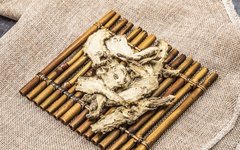
“Angelica does not return, the beautiful wife remarries”
“Angelica does not return, to revive the state”
“Qin Niang is gravely ill, Angelica, Angelica,”
Angelica Sinensis (当归) has always carried a rich literary connotation throughout history.
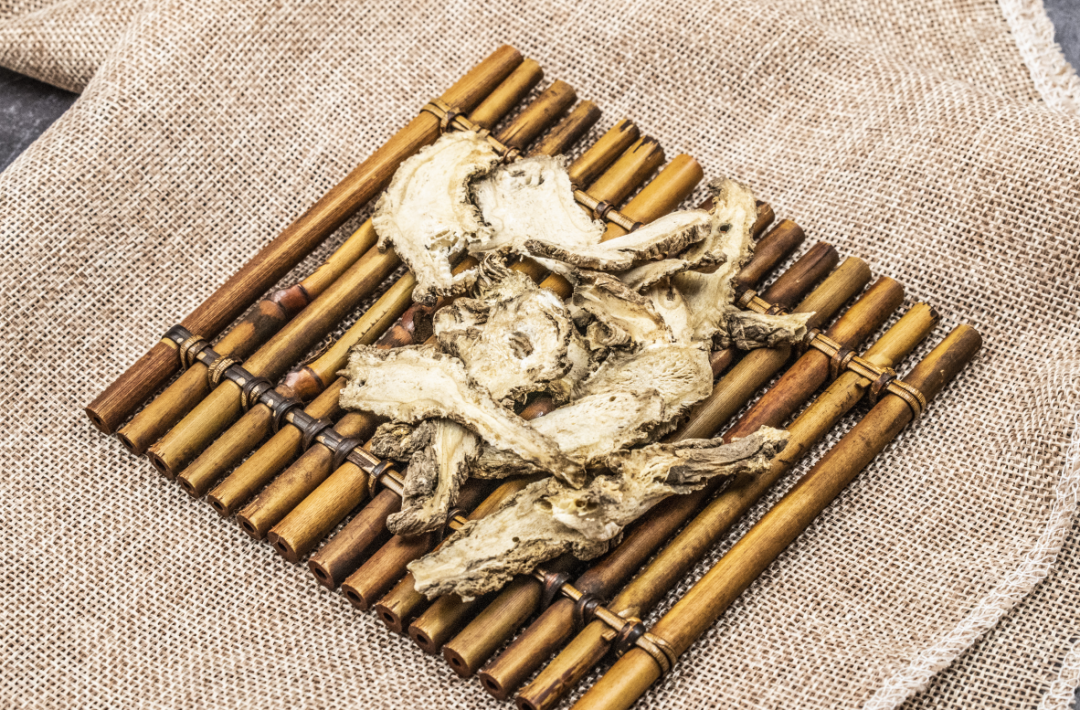
Angelica Sinensis, also known as Qin Gui, Yun Gui, Xiang Dong Gui, and Min Dong Gui, belongs to the Apiaceae family. It is a perennial herb that grows to a height of 0.4 to 1 meter. It is primarily produced in the southeastern part of Gansu Province, with Min County being the largest producer of high-quality Angelica, followed by Yunnan, Sichuan, Shaanxi, and Hubei provinces, all of which cultivate it.

Angelica Sinensis was first recorded in the Shennong Bencao Jing, classified as a medium-grade herb, known for its effects in nourishing blood, regulating menstruation, promoting blood circulation, alleviating pain, and moistening the intestines to relieve constipation. It is referred to as the “holy medicine for blood nourishment.” Among the 25 most commonly used Chinese herbs, Angelica ranks 8th, with the saying “nine out of ten return to Angelica.”
The Name of Angelica
The Compendium of Materia Medica: “In ancient times, when a man married, he sought to continue his lineage. Angelica regulates blood and is a necessary medicine for women, thus it is named Angelica.”
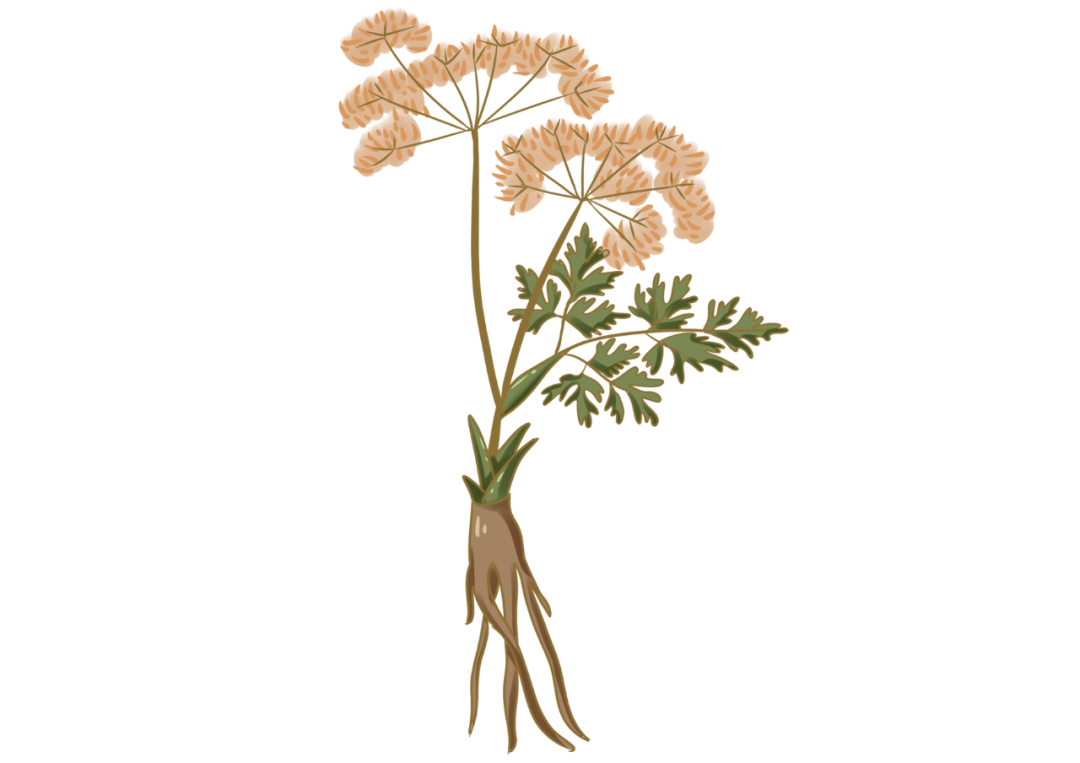
The Supplement to the Compendium of Materia Medica: “When the qi and blood are chaotic, taking it will stabilize the qi and blood. Each has its own name of return, hence it is called Angelica.”
Angelica: Yearning for Home
Angelica has historically been a favorite herb among poets and scholars to express their longing. For example, the Tang Dynasty poet Zhang Shuo wrote, “A wild goose flies over the snow, just as I travel the Hengyang road. With a beak carrying the word of parting, I send it far with Angelica grass. I worry that spring comes late, and my heart is startled that the cold leaves early. Remembering home, I ride on wings, longing for companionship in my embrace. Falling leaves answer an old friend, I will follow the river as the trees grow old.”
Song Dynasty poet Wang Zhi wrote, “What medicine can cure the intestines nine times? Durian is not like Angelica. Yet, the cap of the expedition hat is removed, tears fall like the sounds of monkeys in the Ba Gorge. My eyes are wild, and dreams only fly beside old friends. — Huanxi Sha.”
In these ancient poems, the term “Angelica” often carries a sense of homesickness and yearning for home.
Throughout history, there have been many anecdotes related to Angelica, today, I will share one with you.
Angelica Does Not Return, Reviving the State
It is said that during the Three Kingdoms period, Sima Zhao sent generals Zhong Hui and Deng Ai to attack the Shu Kingdom. The Shu ruler Liu Shan was indulgent and foolish, surrendering at the first opportunity. In a desperate situation, Jiang Wei, who was defending Jian Ge, had to feign surrender to Zhong Hui, waiting for the right moment to exploit the contradictions between Zhong, Deng, and Sima Zhao to incite Zhong Hui and revive Shu Han.
Later, Jiang Wei’s mother heard that her son had joined the enemy and angrily scolded him as an “ungrateful son without virtue,” writing a letter to reprimand him for his disloyalty and lack of filial piety. She sent it to Jiang Wei. Upon reading his mother’s letter, Jiang Wei felt anxious and conflicted; he wanted to tell the truth but feared it would reveal his plans and ruin everything. If he did not respond, he could not bear to see his mother saddened. After much thought, he devised a clever method. He chose two bags of herbs, one was Yuan Zhi (Polygala) and the other was Angelica, and had the messenger take them back.
When Jiang’s mother saw them, she understood her son’s intention completely; it turned out he had great ambitions to revive the state, and the lost territory should rightfully return to Shu Han.
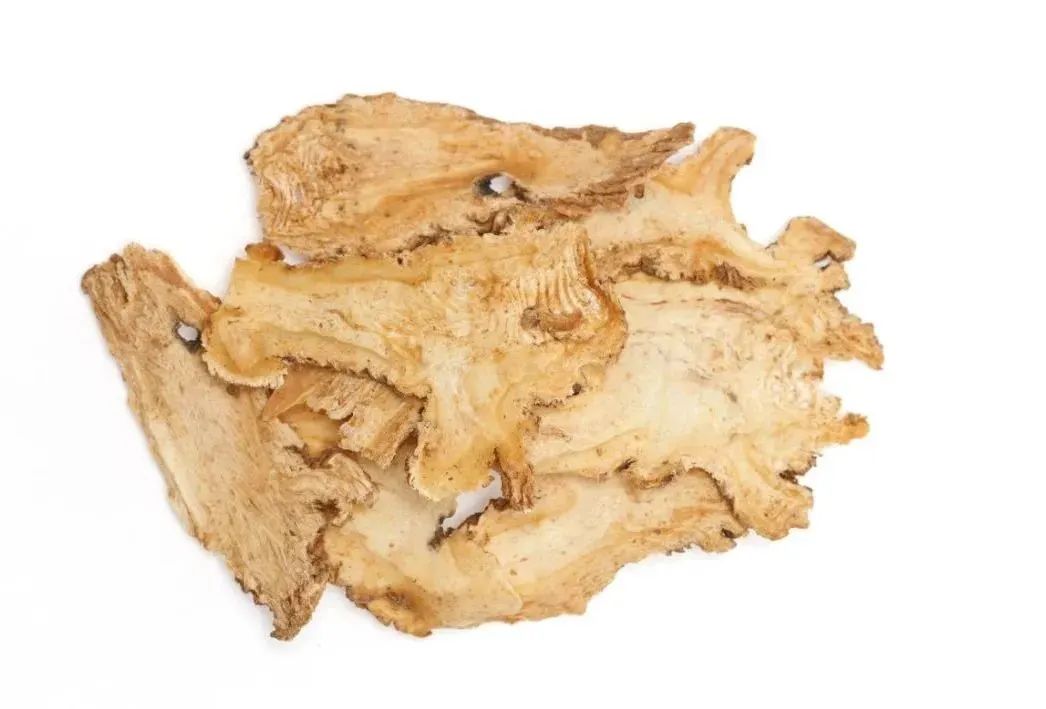
“The majestic gates of the merchant pavilion are grand and heroic, offering warmth and boldness; the remaining water and mountains under the setting sun, with lofty aspirations, I send my longing with Angelica.” This is the couplet from the Jiang Wei Temple in Jian Ge, Sichuan, reflecting the later generations’ sighs over Jiang Wei’s inability to balance loyalty and filial piety, and their admiration for the general’s dedication to reviving the Han dynasty.
Famous Medicine: Angelica
The medicinal history of Angelica can be traced back to about 2000 years ago during the Eastern Han Dynasty, first appearing in the Shennong Bencao Jing, and subsequently recorded in various materia medica texts throughout the ages.
Shennong Bencao Jing: Sweet in flavor, warm in nature. It treats cough, counterflow of qi, warms the chills of malaria, and alleviates skin conditions, as well as women’s issues like excessive menstruation and various sores and wounds, to be boiled and consumed.
During the Jin to Northern and Southern Dynasties, the use of Angelica expanded further. Ge Hong in The Emergency Prescriptions for Emergency Situations used a combination of Angelica, Gui Xin (Cinnamon), and Zhi Zi (Gardenia) to treat sudden heart pain. According to The Compendium of Materia Medica with Annotations, Angelica was first produced in the area of Shouyang Town and Luomen Town in Longxi County, Gansu.
In the Tang Dynasty, the application of Angelica greatly expanded, highlighting its nourishing and blood-activating effects. Ancient and Modern Records noted that She Gan Decoction could be used to treat throat obstruction, where pain prevents eating, utilizing Angelica’s blood-activating and pain-relieving properties.
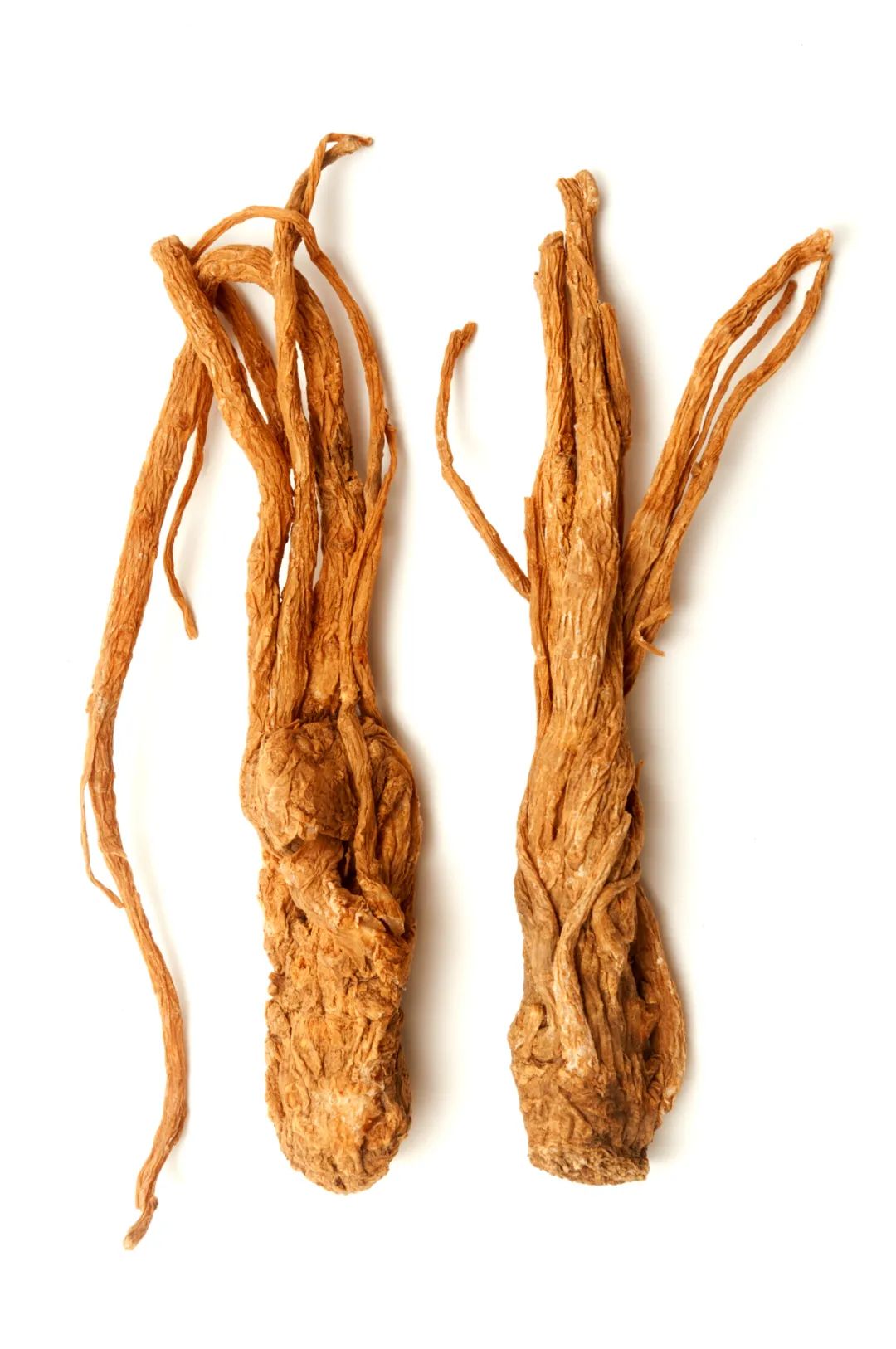
By the Song Dynasty, the formulas incorporating Angelica had increased significantly and were commonly used by clinical practitioners. For example, the Si Wu Decoction recorded in The Formulas of the Taiping Huimin Heji Bureau became a standard formula for nourishing blood and regulating menstruation. The Gui Pi Decoction in The Jisheng Formula treats heart and spleen deficiency, with remarkable efficacy. This indicates that Angelica was widely used at that time, with many of its combinations achieving good therapeutic results.
People also increased the cultivation area of Angelica. According to The Supplement to the Compendium of Materia Medica, Sichuan began cultivating Angelica, and by the Ming Dynasty, The Compendium of Materia Medica recorded that its cultivation range had expanded to Shaanxi, Gansu, and Sichuan. Currently, it is mainly produced in Min County, Dangchang, and Zhang County in Gansu, with distinct regional characteristics and high quality, known as “Min Gui” or “Qin Gui.”
In recent years, due to climate change and socio-economic development, the cultivation area has continuously expanded westward to nearby counties and cities in Gansu Province and to counties like Huzhu, Datong, and Huangzhong in Qinghai Province. Statistics show that this region accounts for about 70% of the national production of Angelica. Additionally, Angelica from different regions has different nicknames; for instance, the Angelica produced in the area from Wenchuan to Jiuzhaigou in Sichuan is called “Chuan Gui.” In the late Qing Dynasty and early Republic of China, it was introduced to Heqing in Yunnan, and in recent years, it has gradually formed a large cultivation scale in the northeastern and northwestern parts of Yunnan, also known as “Yun Gui.”
Revealing the High-Quality Genome of Angelica
Although the cultivation scale of Angelica in China has significantly increased, the lack of a reported complete genome has limited research on its genetic development, medicinal quality, and molecular breeding.
Recently, the Economic Crop Whole Genome Design Breeding Innovation Team at the Shenzhen Agricultural Genomics Institute of the Chinese Academy of Agricultural Sciences released the first chromosome-level reference genome sequence of Angelica, revealing the synthesis and evolutionary mechanisms of coumarin compounds, providing new insights into the evolution of Apiaceae plants.
The researchers conducted whole-genome sequencing and assembly of Angelica, with a genome size of 2.37Gb and an assembly completeness of 98.6%, annotating a total of 43,202 genes. It was discovered for the first time that Angelica diverged from the Apiaceae plant water celery about 27.7 million years ago and underwent a unique whole-genome duplication event specific to the subfamily Apiaceae, preliminarily explaining the evolutionary patterns of the Angelica genome.
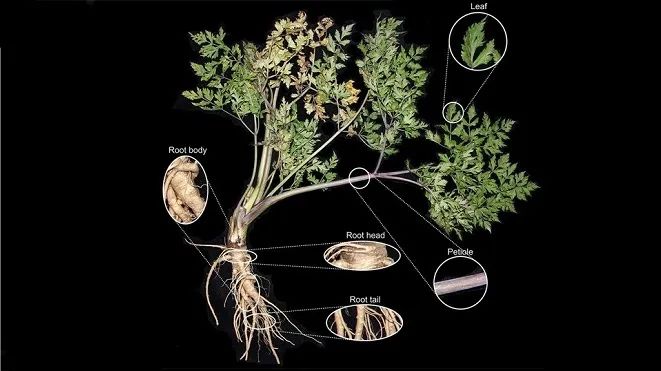
At the same time, key genes for the synthesis and regulation of simple coumarin in Angelica were identified, providing new ideas for the biosynthesis of coumarin compounds and laying the foundation for accelerating genetic research and medical applications of coumarin compounds.
Angelica: Medicinal Cuisine
Speaking of Angelica, one must mention this medicinal dish. In the harsh winter, cooking a pot of Angelica lamb soup at home allows you to enjoy delicious food while also nourishing your health.
Black Bean Lamb Stew with Angelica
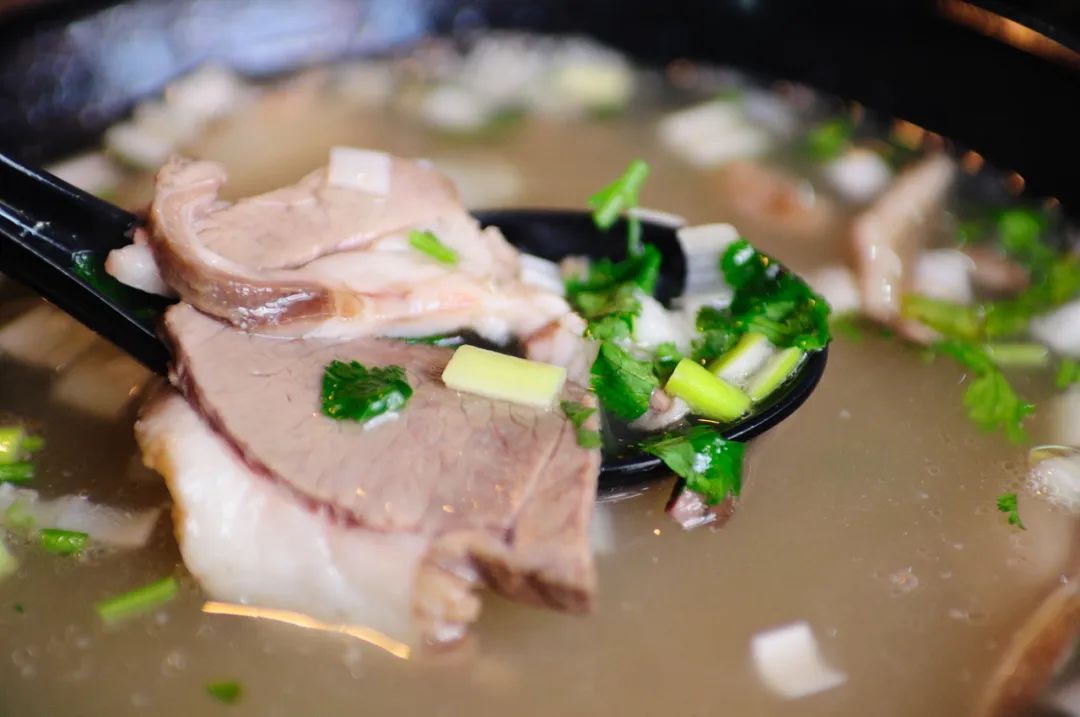
Take 1000 grams of lean lamb, 100 grams of black beans, 10 grams of Angelica, and 10 grams of longan. Choose Angelica that is plump, with few tails, golden or brownish skin, full flesh, a white cross-section, and a strong herbal aroma with a sweet taste.
First, wash the black beans and boil them until soft. Clean the Angelica with water, and slice the ginger and scallions for later use. Place the lamb, scallions, cooking wine, and Angelica into a clay pot, add an appropriate amount of boiling water, bring to a boil over high heat, then add the black beans, and switch to low heat to simmer for about 1 hour. Season with salt before serving.
This dish nourishes blood, promotes blood circulation, dispels cold, and alleviates pain. Friends with cold-related diseases or anemia may want to try it. Of course, healthy individuals can also enjoy it, as it has preventive effects against colds.
◆ ◆ ◆ ◆ ◆ Scan the QR code below and click to follow, and join me in exploring the cultural history of fruits and vegetables while seeking inspiration from the natural world.


